Green architecture – Eco-Sense House
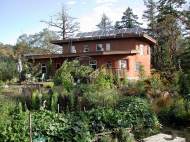 We already wrote about the Omega Center for Sustainable Living in Rhinebeck, N.Y., which got the Living Building Challenge certification (this project is also LEED Platinum certified), and in this article we’re going to write about Eco-Sense, a private home in beautiful Victoria, British Columbia, that’s been bestowed with “Petal Recognition” for conquering the Site, Water, Health and Beauty requirements of the Living Building Challenge.
We already wrote about the Omega Center for Sustainable Living in Rhinebeck, N.Y., which got the Living Building Challenge certification (this project is also LEED Platinum certified), and in this article we’re going to write about Eco-Sense, a private home in beautiful Victoria, British Columbia, that’s been bestowed with “Petal Recognition” for conquering the Site, Water, Health and Beauty requirements of the Living Building Challenge.
Ann and Gord Baird’s Eco-Sense, described as North America’s first code-approved, seismically engineered load-bearing insulated cob (clay, sand and straw) residence, is among the first projects to gain the partial Living Building Challenge certification. The cob used in Eco-Sense also incorporates pumice to boost insulation (estimated R-20). Roof insulation is insulated with R-40 formaldehyde free fibreglass insulation, while floor is insulated with R-12.5 rigid styrofoam. Many interior walls are constructed with light clay infill. High fly-ash concrete was used where needed in order to reduce carbon footprint. Exterior lime plaster is almost carbon neutral, and its pigmentation is achieved with iron oxides.
The multigenerational family home for 6 employs passive solar design with no windows on the north wall. However, the house has window overhangs, natural chimney, light tubes, opening high efficiency fiberglass frame windows and selective window glazing which all ensure abundance of natural lighting and fresh air. The power is generated by a 2 kW solar array with grid tie to BC hydro, while 60 solar evacuated tubes are used for hot water which is used for hydronic in floor space heating and for potable domestic use. Additional winter heating is achieved by wood gasification wood stove which is 85% efficient.
Living roof custom design was built with less manufactured materials (EPDM, armtec 400, perlite, filter cloth, pumice, leaf mulch, native plants and creeping thyme). Aside its aesthetics it benefits sound insulation, fire resistance, increases roof r-value, reduces roof temperature thereby increases solar PV production, storm water management, mini-watershed for water filtration. Earthen floors, earthen counters, natural plasters, natural milk paints have no VOC’s, thus they produce no toxic off-gassing.
Rain water harvesting provides 37,854 liters (10,000 gallons) of water for irrigation of food gardens. Domestic indoor water comes from an existing well on site. Water conservation is achieved by no flush toilets, low flow fixtures and no bathtubs. Composting odorless toilet (no water) is based on the Humanure system. Compost is tested after 2 years for bacterial pathogens and is safe to use in the food garden. Grey water is also used for filtration of organic solids into worm castings. Water is re-used for fruit/nut tree irrigation.
The house is wired for 24vDC and 110vAC (workshop also has 240vAC). LED lighting, DC appliances (2 fridges and one shared freezer), HE front loading shared washer, drying room in mechanical room, clothes line, no electrical kitchen appliances. The family uses propane cook stoves in both kitchens where they cook food from scratch and eats mostly local with food gardens. Bedrooms have master AC switch to turn off power which ensures no phantom loads. Most plumbing and lighting fixtures are recycled, as well as 80% of wood used.

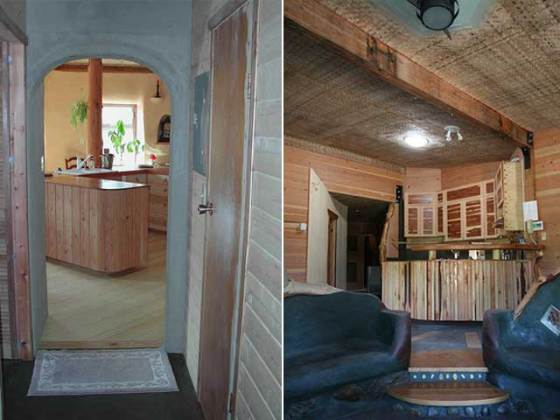
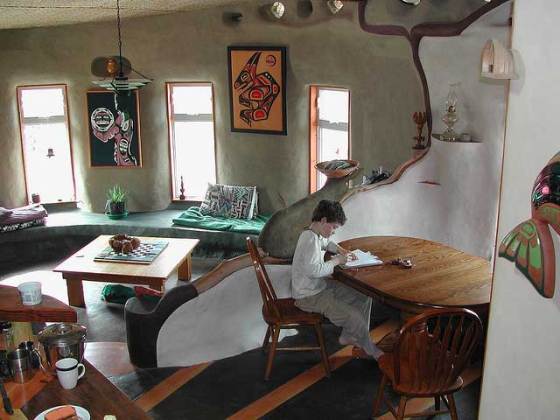
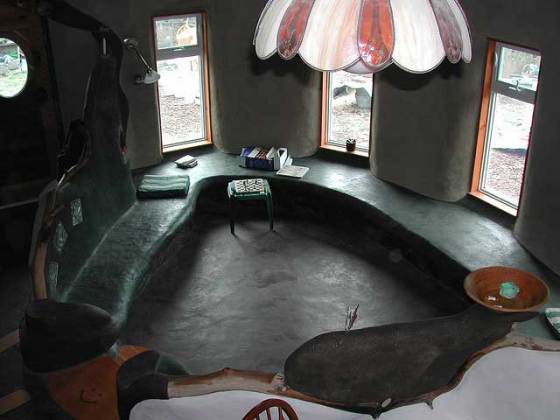
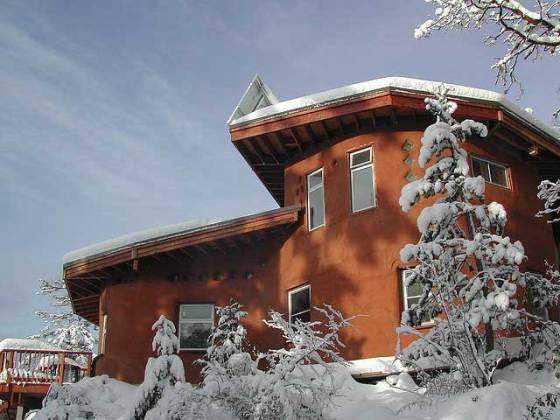








Leave your response!